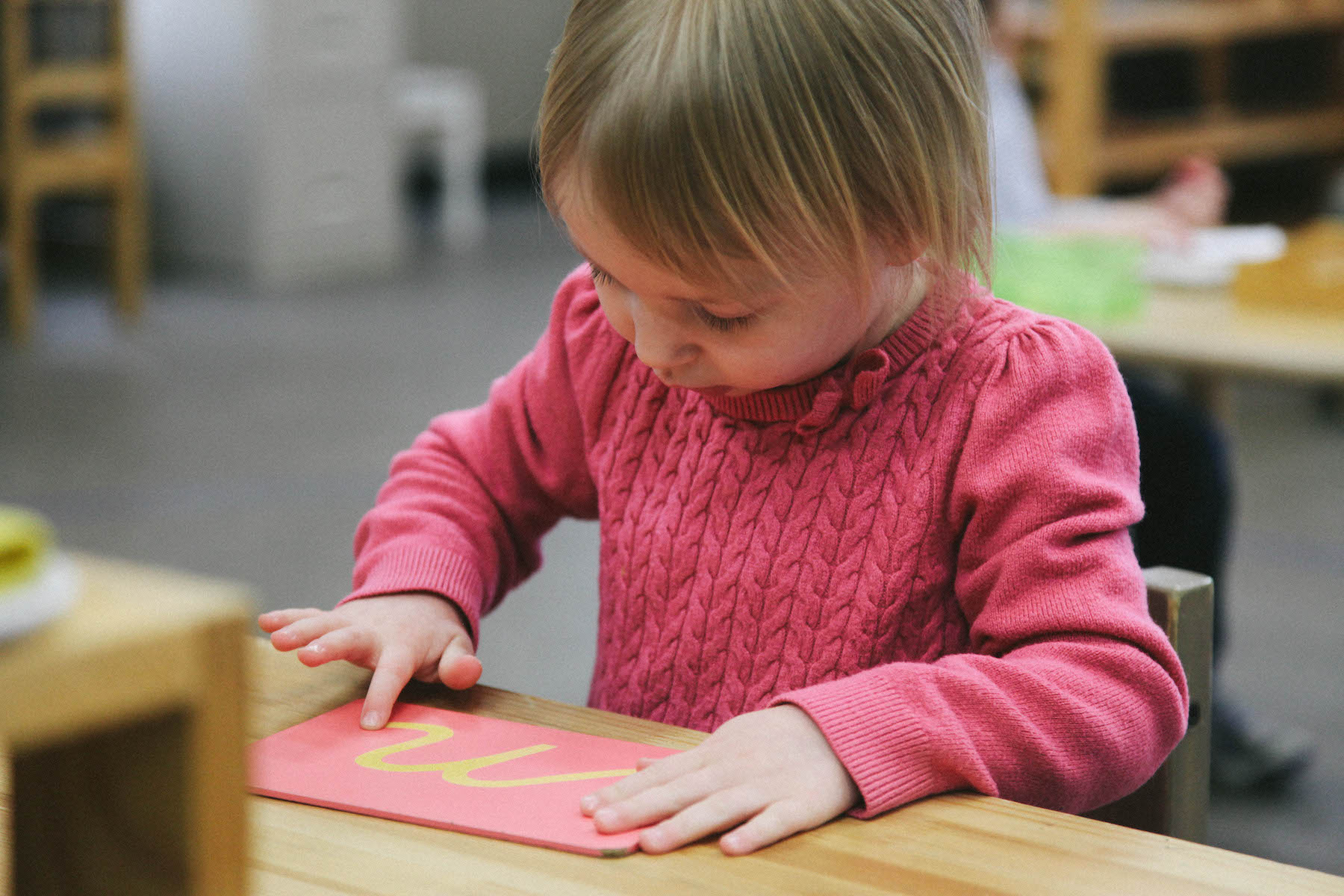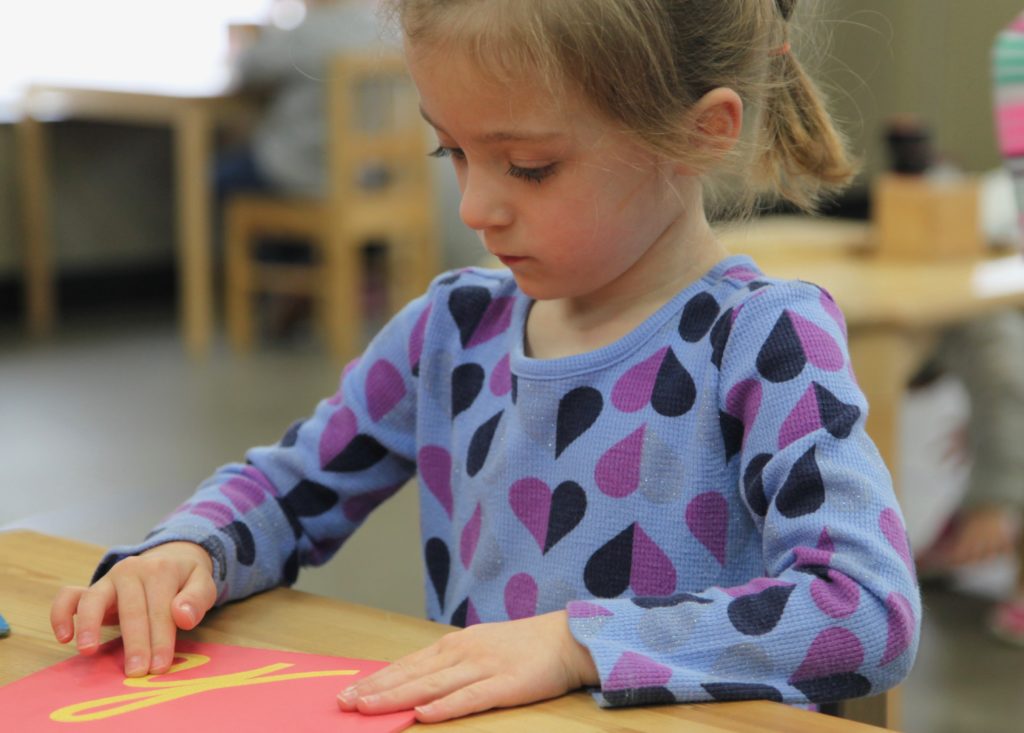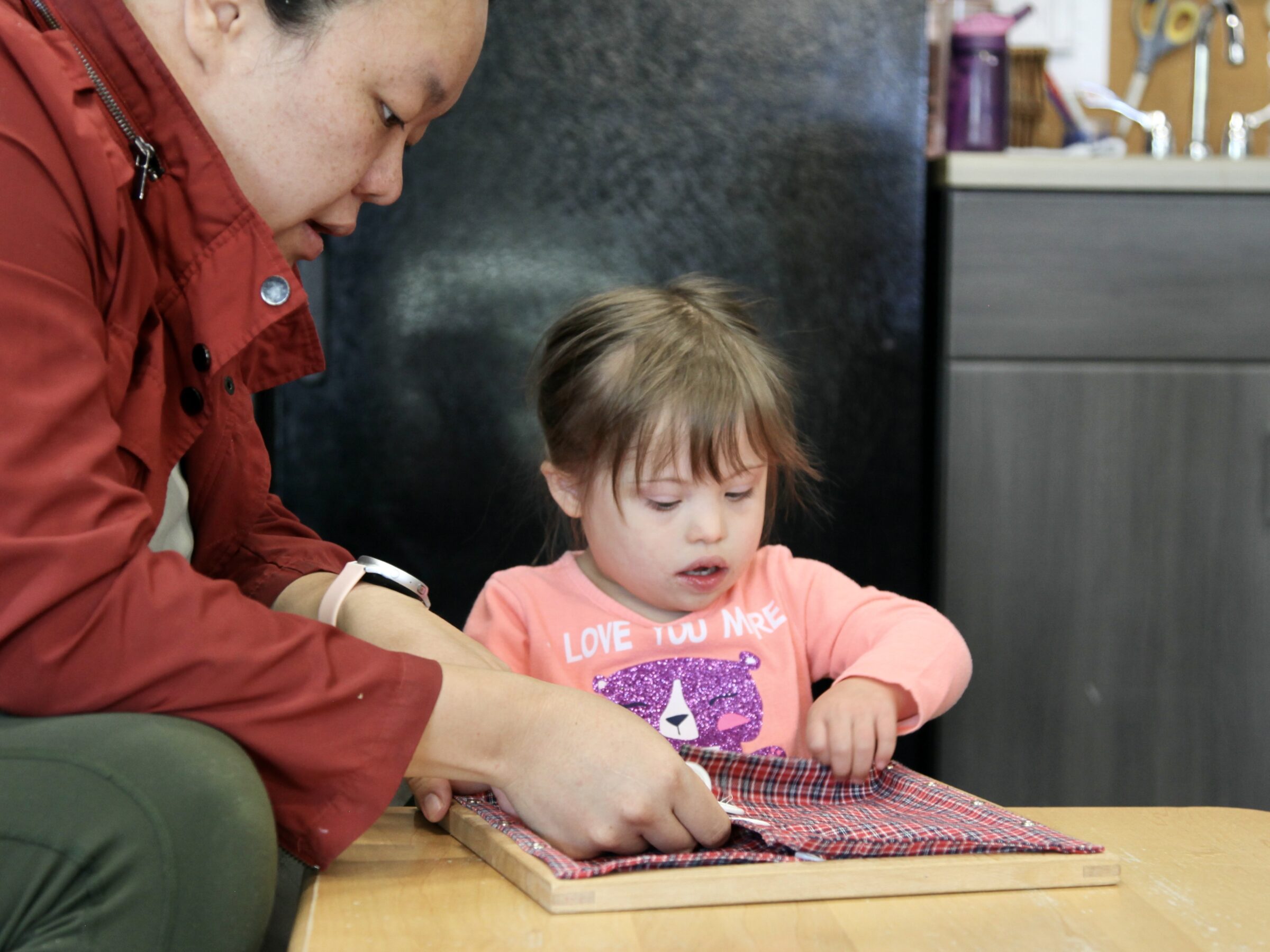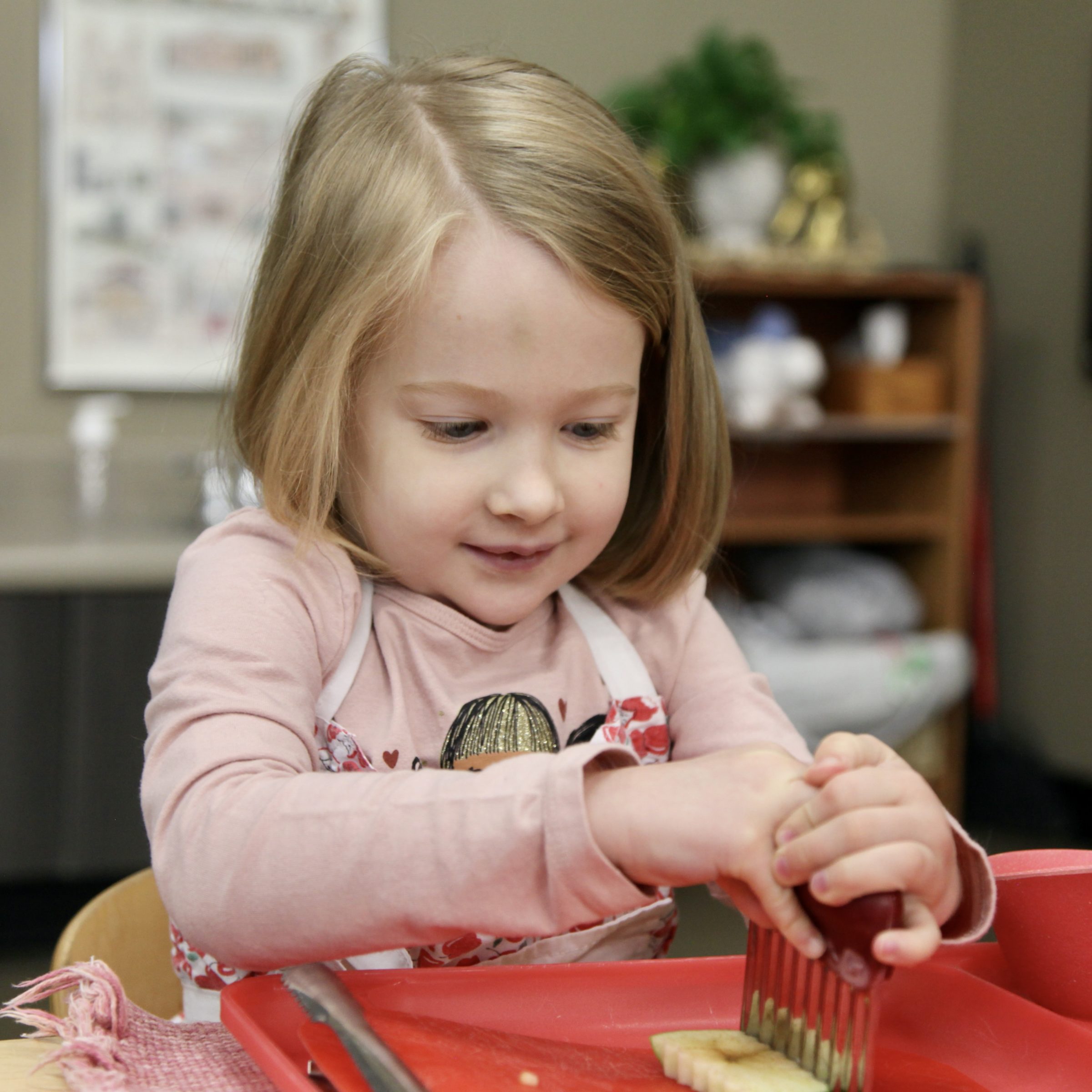Cursive in Montessori
Montessori Activities
For many of us, cursive is a mainstay in our lives. We grew up diligently practicing our handwriting in school and watching our parents write in cursive at home. Our role models lived out our efforts in notes and checks and love letters.
I have a very distinct memory of sitting next to my father at breakfast one early Saturday morning as he carefully composed a handwritten letter to the President of the United States. I asked why he was handwriting the letter instead of typing it on the typewriter. He said, because then the president will know I mean what I say.
Cursive is often the primary way we express ourselves through writing and there’s something pretty magical about the way our thoughts almost effortlessly flow on to the page. Yet, across the United States, public schools are replacing cursive with keyboard classes.
What happened?
For a new generation of students, cursive is slowly fading away from their purview and in this short post, we address the phenomenon through the lens of Montessori.
In Montessori schools throughout the world children are introduced to cursive before they are introduced to print. They also learn to write before they learn to read, and learn the sounds of the letters before the names. Of course, in traditional preschool environments the opposite approach is taken: print comes before cursive, reading comes before writing, and names come before sounds.
Here’s why.
When we think about children drawing at a very young age, how do they move their hand? We see them making swirls, moving in concentric formation, grasping the crayon in the palm of their hand as they swiftly move across the page. We’ve all witnessed the free flowing movements a child makes as they work to refine their fine motor skills.
What’s at work here?
While often not physically capable of writing in print, as their manual dexterity and fine motor skills are not yet refined, children are often mentally capable of starting to write. With cursive, children can actually get their thoughts out on the page.
Maria Montessori is rather instructive on this matter: “The hand can be prepared directly to trace the signs of the alphabet by the help of the tactile and muscular senses, not by that of sight.”
“The hand can be prepared directly to trace the signs of the alphabet by the help of the tactile and muscular senses, not by that of sight.”
Additionally, with cursive, not only does each letter start on the left and end of the right, letters in one word start on the left and end on the right, which prepares a child for reading. The letters are connected and distinct, so trouble spots with print, including b, p, and d are not issues. Cursive is also very helpful for children who are left-handed, as it’s not uncommon for them to write away from their body, like we do when we write right-handed, producing a mirror image.
When we introduce writing that meets a child’s natural development, in this case cursive, the goal is fluency. Getting your brain to talk to your hand and replicate the image you have in your mind. When you have greater command of this tool, cursive, print, calligraphy, drawing, different alphabets, they’re all more accessible.
I think it’s also important to iterate that cursive is, historically, taught in the public schools starting in third grade. In Montessori, it’s typically taught starting around three years old. Children are capable of writing cursive before they are capable of writing in print and one of the reasons we believe it’s being replaced in public schools is because the window of opportunity for children to learn is not as critical. In third grade, children are more eager to learn how to type than to learn how to write, because, invariably, they’re already writing in print.

This is not to say cursive at a later age holds no value. Those beautifully written signs with block or scripted letters are continuing to be beautiful and appealing, even for those of us who have perhaps less fond memories of learning cursive. Cursive, script, penmanship, modern calligraphy, all these are artistic outlets, methods of expression. But the goal in Montessori, the reason behind introducing cursive first, and at such a young age, is perhaps more utilitarian, than romantic: to help children write.
We’re not luddites, eschewing technology, insisting children never see a keyboard, that typing isn’t an important skill. The world we live in is surrounded by print and keyboards. We’re typing this post right now on a computer. However, the point we’d like to make is that all of us learned to write before we learned to type, and learned to read as well. With Montessori, the best way to help children get started writing is by learning cursive.
You might also enjoy this article we wrote for the The Atlantic, Don’t Write Off Cursive.
Written by:
Bobby George





